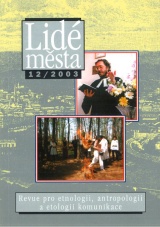Posvátno a Svatobarborský karner
DOI:
https://doi.org/10.14712/12128112.4329Abstrakt
The recent restoration of the St Barbara ossuary in Kutná Hora and the preceding research have prompted the need of a thorough study of historical and theological circumstances that influenced the form and transformation of sacral architecture in the course of the 14th to 18th centuries. The knowledge to a large extent contributes to the choice of restoration approaches and techniques. Students of the seminar of arts history at the Faculty of Arts of Charles University in Prague as well as students of theology at the Theological Faculty of Charles University in Prague were asked to prepare studies on the issue. The St Barbara ossuary was built since the early 1380s, in parallel with the St Barbara church by the Parléř construction works. lts construction was discontinued before the Hussite wars and it has never been resumed. From the original project of the one-storey cemetery chapel with an ossuary, only the basement part of the ossuary was completed. At the level of the first flood only a wooden roof frame was built in the second half of the 15th century. In the Baroque era a small garden plot was established there and in 2000 a lookout terrace. Until 1626, the room of the ossuary was used for its original purpose. Then, until the mid-18th century it was used as a chapel of a religious congregation devoted to the Corpus Christi. From 1789, it served to practical, secular purposes, first as a barley manufacturing and sales facility, later as an organ workshop. From 1948, it had no use or protection and it becarne dilapidated. The sacred character of the building was only retained in the name "Corpus Christi chapel", which is being used until now, though without the original importance. In cooperation with the National Heritage Institute, conservationists, architects, and technologists, the town hall of Kutná Hora proceeded to the restoration of the site in 1999-2000. It is still used as an architectonic site within a route for tourists. Although it is a unique example of the Luxembourg gothic from the time of Wenceslas IV and after the latest restoration also a textbook example of a combination of historic and aesthetic aspects when the character of a sacral historical site is being transformed, a different method of use is being considered, which would rather lay emphasis on the attractiveness of death (or fear of it) from the present-day atheistic look.
Stahování
Publikováno
Jak citovat
Číslo
Sekce
Licence

Tato práce je licencována pod Mezinárodní licencí Creative Commons Attribution-NonCommercial-NoDerivatives 4.0.


